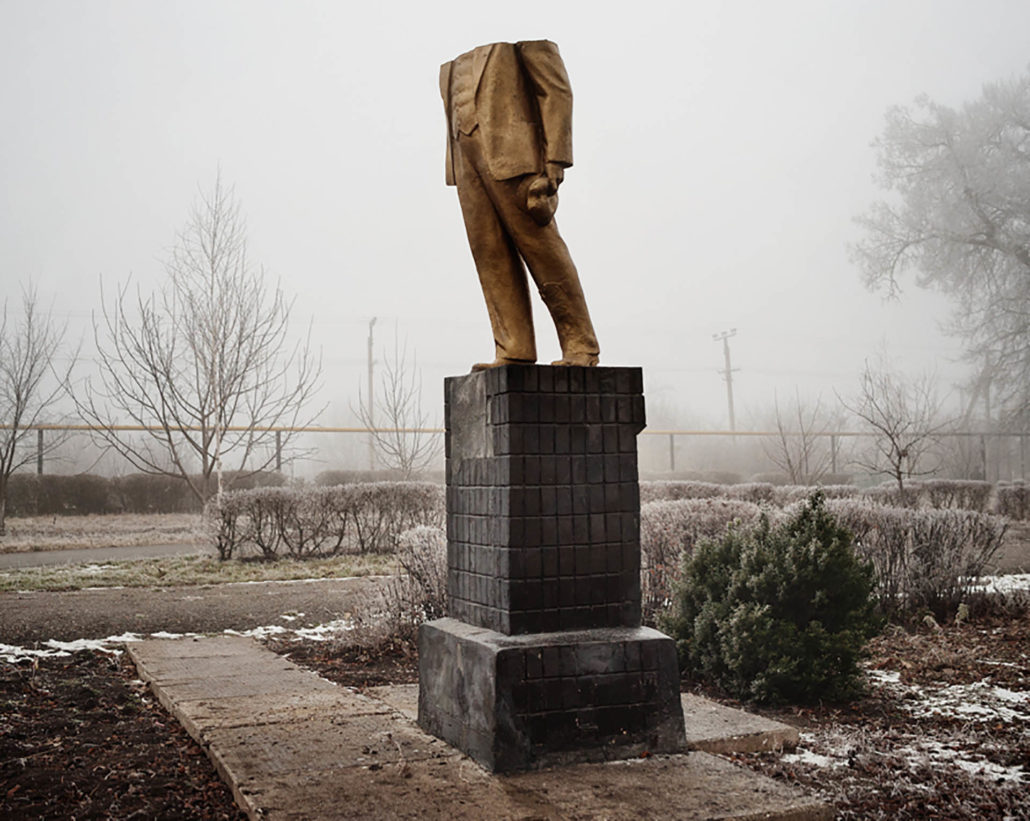DE MAÏDAN À LA GUERRE (FROM MAIDAN TO WAR)
This post is also available in:
 French
French
“Revolutions have never been planned in advance. When they become eternal, time starts playing against the event – little by little the heros wear themselves and send the characters to more and more uncertin destinies. For years, Guillaume Herbaut goes to Ukraine to follow the tensions between the supporters of a country turned to Europe and those who are attracted by its Russian component.
This struggle, which begins with the heroic occupation of a square in Kiev, transforms into a trench warfare in the east of the country: how can we interpret this installation of a people in what becomes a cursed time in the eyes of everyone? Perhaps by attribuating a figure of a fighter to each rebel being, and by making him enter the legend of the news feed.
How not to remind that it is there, in this precise place of the world, in the middle of the 19th century, that the photograph was confronted with the war for the first time? Crimean War (1853-1856): the Englishman Roger Fenton advances with his van-laboratory pulled by six horses where he develops his collodion glass plates. They will later be used to engrave “after photography” the first press images in history.
Herbaut finds something archaic in the Donbass war: taciturn figures, fixed landscapes, frozen atmosphere. Herbaut fraternizes with his predecessors in photography in the same way as the separatists and the Ukrainian army replay the ancient dispute of Europe and Asia.”
Michel Poivert
“From Chernobyl to war. Ukraine is a marker for my photographic career. Through this country, I turned from the classic black and white photojournalism to a documentary photography telling the invisible drama of a nuclear disaster. In 2001, I felt myself bound to this territory as soon as I took the first images. The colours reminded me of my childhood. People accepted me in their daily lives. I discovered the contaminated prohibited zone. A parallel world, a different relationship to reality, a question about how to photograph the traces of History.
Since then I visit this country every year. 2004, the Orange Revolution and the Donbass. Then, the return of Cossacks, symbols of a Ukrainian identity. 2008, Crimea and its intercommunity tensions. Series of reports, like a puzzle preparing me to follow the Maidan revolution and the war. The history of this country allowed me to explore different narratives, to break benchmarks to finally return to the news and to think about the photojournalism of today. Like the contamination in Chernobyl ‘leopard spots’, Ukraine is currently divided into different zones: contaminated zones, war zones, zones of peace as a mirror of the future of our societies. A reason that drives me to continue.”
Guillaume Herbaut
Guillaume Herbaut, born in 1970, lives and works in Paris. Parallelly to his work for the press, his documentary work takes him to places full of history where he questions their symbols and memory in order to reveal invisible tragedies: Chernobyl, Auschwitz, Nagasaki and, more recently, the conflict in Ukraine. His photographs were exhibited at the Jeu de Paume, at the Maison rouge as well as during numerous festivals. He has received several awards, including two World Press, a Visa d’or, the Niépce Award of 2011 and, in 2016, the Bayeux-Calvados Award for War Correspondents (web journalism category) for his Ukrainian roadmap produced by Arte Info. The same year, he published 7/7, the shadow of the living beings (La Martinière). In 2018, his work was exhibited at the Great Arch of Photojournalism in Paris under the title “For Memory”.
From 18/01/2019 to 31/03/2019
GALERIE STIMULTANIA
33 rue Kageneck
67000 STRASBOURG
France
Opening hours : Du mercredi au dimanche de 14h à 18h 30
Phone : 03 88 23 63 11
stimultania@stimultania.org
www.stimultania.org



